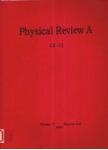版权所有:内蒙古大学图书馆 技术提供:维普资讯• 智图
内蒙古自治区呼和浩特市赛罕区大学西街235号 邮编: 010021

作者机构:Center for Quantum Information and Quantum Control Department of Electrical & Computer Engineering and Department of Physics University of Toronto Toronto Ontario Canada NTT Basic Research Laboratories NTT Corporation 3-1 Morinosato Wakamiya Atsugi-Shi Kanagawa 243-0198 Japan and CREST JST Agency 4-1-8 Honcho Kawaguchi Saitama 332-0012 Japan
出 版 物:《Physical Review A》 (物理学评论A辑:原子、分子和光学物理学)
年 卷 期:2007年第75卷第3期
页 面:032314-032314页
核心收录:
学科分类:070207[理学-光学] 07[理学] 08[工学] 0803[工学-光学工程] 0702[理学-物理学]
主 题:UNCONDITIONAL SECURITY CRYPTOGRAPHY DISCRIMINATION PROTOCOL STATES PROOF
摘 要:Quantum key distribution (QKD) can be used to generate secret keys between two distant parties. Even though QKD has been proven unconditionally secure against eavesdroppers with unlimited computation power, practical implementations of QKD may contain loopholes that may lead to the generated secret keys being compromised. In this paper, we propose a phase-remapping attack targeting two practical bidirectional QKD systems (the “plug-and-play system and the Sagnac system). We showed that if the users of the systems are unaware of our attack, the final key shared between them can be compromised in some situations. Specifically, we showed that, in the case of the Bennett-Brassard 1984 (BB84) protocol with ideal single-photon sources, when the quantum bit error rate (QBER) is between 14.6% and 20%, our attack renders the final key insecure, whereas the same range of QBER values has been proved secure if the two users are unaware of our attack; also, we demonstrated three situations with realistic devices where positive key rates are obtained without the consideration of Trojan horse attacks but in fact no key can be distilled. We remark that our attack is feasible with only current technology. Therefore, it is very important to be aware of our attack in order to ensure absolute security. In finding our attack, we minimize the QBER over individual measurements described by a general POVM, which has some similarity with the standard quantum state discrimination problem.